#TerraCycle
Explore tagged Tumblr posts
Text

Why do I use Terracycle for recycling some items? To try and make a difference.
Being the end of an interesting year, and coming up on what appears to be another interesting year, I’m going to tell you about Terracycle. They recycle practically everything, and as you’ve come to notice, trash is big business. I’d even say that we need trash men and people to handle trash more than we need brain surgeons or rocket scientists, because we’re all drowning in our own trash and waste. Recycling in my area is non-existent, but I do what I can.
I can’t change the world. I can’t change our government, but I can do this small thing with the hope it makes some difference in the world.
I currently have Terracycle boxes for bottle caps, candy and snack wrappers, pet food containers and packaging, and shipping waste. I need to get another container for alkaline batteries. Just waiting for another good sale.
Right now, I’m returning a filled Small: 11"x11"x20” Terracycle Zero Waste Box for Candy and Snack Wrappers. I bought it for $85.50. It took 13 months to fill it.
(11/19/2023 – 12/29/2024. I write the dates on the boxes.)
That works out to $6.576 per month. The last one I just bought was $73.50. I’ll start filling that one. If it takes 13 months to fill, that’ll be $5.65 a month.
I could cram more stuff in there over the next few weeks, but I figured I’d send it in.
Currently, the price for that particular box, size small, is $105 ÷ 13 = $8.076 per month. If it takes me longer to fill it, that means the cost is even less per month.
Yes, the boxes do seem to be quite expensive, even when you break it down to how much it might cost per month.Why are they so expensive? They are shipped to you, and when you fill them, you ship them back for free. It’s not really free, because you paid for it, but there is no additional charge. Once the box is received, they sort through them, and people have to be paid for their work. For now.
Meanwhile, I do try to use less plastic. It’s not easy. I recycle as much as I can of other items, and haul them 30 miles to the nearest recycling center. Not that I actually trust the company running the place, but it’s all we’ve got here. I take metal and aluminum cans 10 miles in the other direction to recycle those. It’s the best I can do for now.
Give Terracycle a look. They have many free programs as well as their Zero Waste boxes. They also make stuff from the plastic they recycle.
2 notes
·
View notes
Photo
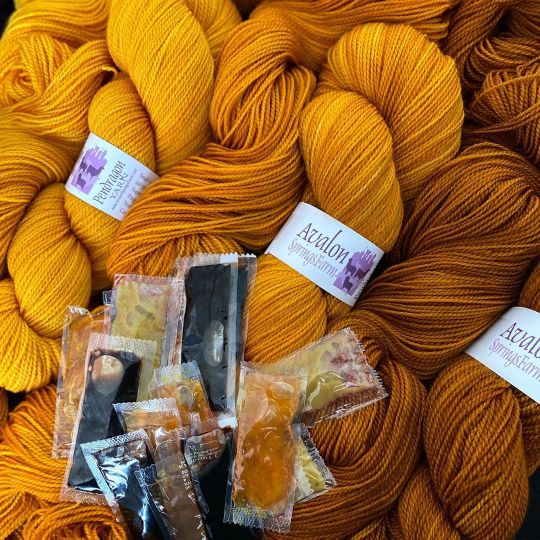
Fun coupon and eco-goodness in one opportunity: This Saturday, 02/11/23 from 11am till 4pm @avalonspringsfarm will be open for the @fiberartstudiotour We participate with @terracycle We will be collecting sauce packets that you are ready to recycle. @tacobell has a special program with Terracycle to recycle this specific packaging. (It can be sauce packets from any restaurant- ie. dressing, hot sauce, soy sauce, mustard etc.) Bring your to-be-recycled packets to @avalonspringsfarm during the tour this weekend and get $2 off any purchase from us. Note: We are not a “public drop off.” But we’re glad to do this fun activity! #avalonspringsfarm #dosomegood #earthgoddess #bekindtotheearth #tacobell #terracycle #yarnlove #fiberartstudiotour #yarnshop (at Avalon Springs Farm) https://www.instagram.com/p/CoXXdSKra00/?igshid=NGJjMDIxMWI=
#avalonspringsfarm#dosomegood#earthgoddess#bekindtotheearth#tacobell#terracycle#yarnlove#fiberartstudiotour#yarnshop
2 notes
·
View notes
Text

Magazine Cover Mockup Concept
#magazine#book#cover#mockup#graphic design#graphics#recycling#climate change#enivornment#terracycle#2023#cardboard#concept
0 notes
Photo

April is Earth Month although, here at Down to Earth Markets, we like to treat every month as Earth Month. Our planet is facing a multitude of challenges including climate change, waste management, pollution and biodiversity loss to name just a few. Responsible environmental stewardship lies at the very core of our mission to provide access to locally, sustainably grown and produced food. But there’s more than one way that a weekly trip to your Down to Earth farmers market can reduce your carbon footprint and have you treading lighter on mother earth all season long. If you’re looking to cut back on the volume of waste you generate this month and beyond, read on to learn more about some of the initiatives we’re taking: Textile Recycling The average American consumer throws away 81.5 pounds of clothes every year and, in New York City alone, more than 400 million pounds of clothes are discarded annually! It’s estimated that 85% of this waste ends up in landfills and incinerators, which has major environmental implications as textile production requires significant amounts of chemicals, energy, water and other natural resources. Furthermore, it can take 200+ years for materials to break down in a landfill, during which decomposing textiles generate greenhouse methane gas and leach toxic chemicals and dyes into the groundwater and soil. Down to Earth has partnered with Green Tree Textiles to provide textile recycling in many of our farmers markets since 2013. Green Tree Textiles strives to protect the planet by collecting unwanted textiles for repurposing by environmentally minded manufacturers and designers. They accept clothing, shoes, accessories, and household linens. Gently used pieces are re-donated to local and overseas charities, while those in poor condition are sold to fiber and rag manufacturers. If you’d like to divert your unneeded textiles from the overburdened waste stream and give them new life, click here for a list of our locations with Green Tree Collection Bins. Food Scrap Recycling The FDA estimates that between 30-40 percent of the U.S. food supply is wasted every year, amounting to a whopping 219 pounds of food waste per person. In fact, Americans throw away more food than any other country in the world! Industrial food production entails massive quantities of land, water and energy while discarded food generates significant greenhouse gas emissions. According to the World Wildlife Federation, carbon emissions from wasted food in the United States is equivalent to that of 37 million cars. While there are plenty of reduction hacks you can follow, generating a certain amount of food waste in the kitchen is unavoidable. Items such as eggshells, coffee grounds and vegetable trimmings can easily be composted in a backyard setup. If home composting is not your bag, many New York state municipalities now offer food scrap recycling programs that accept the full spectrum of food waste including meat, fish and dairy. Among them is New York City, which is in the process of relaunching its brown bin curbside pickup program. Down to Earth Markets works with local community organizations to host onsite educational tables about the benefits of food scrap recycling and provides municipal food scrap collection bins in several of our farmers markets. This makes it easier for shoppers to source their food locally and recycle it locally, easing the transition towards a closed loop, greener food system. Plastic Waste Reduction and Recycling A 2022 Greenpeace report revealed that the recycling rate for municipal plastic waste stands at only five percent nationally – just a fraction of the 40 million tons that Americans generate each year. Approximately 36 per cent of this plastic waste is used in packaging, including single-use plastic food and beverage containers. Unlike most industrially produced supermarket foods, the food sold in our farmers markets has minimal to zero packaging. Plus, we encourage shoppers to bring their reusable totes to the market to avoid creating waste from disposable plastic shopping bags. To extend our efforts in this area in celebration of Earth Month, Down to Earth is providing Terracycle Zero Waste Boxes in select farmers markets for two weeks starting over Earth Day weekend (April 22nd & 23rd). Shoppers will be able to drop off clean, hard-to-recycle plastic food containers made from any flexible or rigid plastic, except compostable plastics. The waste collected will be processed into raw materials that can be reused instead of sent to landfills. These are just a few examples of the many ways in which Down to Earth Markets is helping curb unnecessary waste with the goal of creating a healthier, greener food future for the region in which we operate. We look forward to exploring and embracing further initiatives whenever feasible. Happy Earth Month to you all 💚.
#downtoearthmkts#earthmonth#earthmonth2023#earthday#earthday2023#recycling#textilerecycling#foodscraprecycling#terracycle#plasticreduction#shoplocal#buylocal#eatlocal#farmersmarket#farmersmarkets
1 note
·
View note
Text
Fuck it ig, new fucking post
The fact that my blog is officially green in shinigami eyes makes my blog hard to look at on desktop. Which is annoying because I'm using my laptop to look for a specific post.
2 notes
·
View notes
Text
Primal Chic Beauty: Making The Switch To A Less Intensive, More Earth Based Hygiene and Beauty Ritual
Before we begin, let's talk about the basic tennants before I explain the swaps I made and the products I love:
Less is More: The biggest part of the Primal Chic beauty routine is it's simplicity and minimalism. I don't want you to read this post, dump all of your current skincare and makeup into the garbage just to go out and buy the things I talk about here. Use up what you already have and make the switch gradual.
Clean Clean Clean: We want to be utilizing products without harsh chemicals & unethically sourced components. The easiest way to tell if something is on or off the list is their ingredient transparency. Especially with cosmetics. Avoid unneccessary fragrances, dyes, colorants, and preservatives, and aim for things like Cruelty Free, Paraben Free, Sulfate Free, and Triclosan free. Aim for companies that are transparent about their supply chains, both for the labor in creating them, and in their ingredient sourcing. I also prefer women owned and family owned brands rather than the "clean" lines of bigger companies.
Be Smart About Animal Products: Personally, as someone with a soy allergy, I'm a big fan of certain animal products in my skin and beauty rituals, Goat's Milk Soaps, Beef Tallow hair masks, Honey & Yogurt face masks, etc. However, while I am a proponent of using the entire animal, make sure you're checking the sourcing of these products as some companies are more ethical than others. I'm lucky in that I live fairly close to the Amish and therefore have access to a certain amount of local agriculture that others may not have access to. If you're buying from an unknown company or farm, drop them a line to see where they're sourcing their animal products from. The more ethical companies rarely have an issue explaining (and bragging) about the welfare of their source animals. Things we definately want to avoid though are things like Shark Liver Oil (certain Squalene), Ambergis (whale stomach lining), and Castoreum (artificial vanilla flavor/scent produced from the castor sacs of beavers located near the anal glands). If you want to save yourself the hassle, Vegan skincare is an option, just be sure to keep an eye out for allergens like Soy or Mushroom Enzymes.
Now, let's talk about some of the Primal Chic changes in my own beauty routine:
Old Face Routine:
Oil Cleanser
Regular Cleanser
Scrub
Toner
Oil
Eye Cream
Targeted Treatments
retnoids
Moisturizer
Neck and Chest Cream
Sunscreen
Foundation
Concealer
Blush
Highlight
Contour
Bronzer
Eyeshadow
Eyebrow Gel
Eyeliner Pen & Pencil
Mascara
finishing powder
finishing spray
New Face Routine:
Castile Soap
Miracle Balm
Almond Oil as needed for dry-flaky patches
Sunscreen
Pink Color Balm/ Multistick (Eyes, Cheeks, Lips)
Mascara
Eyeliner Pencil if I'm feeling fancy
That's it. The really crazy thing about it too? I had more acne, dryness, irritation, and inflamation with the old routine. I did have about 2 weeks of acne after making the switch as my skin adjusted but I haven't struggled with major skin issues since. Part of it was cutting back on the amount of makeup I was wearing, as a full beat vs a little blush and eyemakeup with a lip is a lot less product on the skin. Part of it was not creating new issues for myself by trying to treat the old issues with harsh chemicals. I also cut out a lot of fragrances from my skincare, with my only scented skincare product left being my sunscreen since I don't seem to have any reactions to Sun Bum's products. My used up makeup containers I take to my local health foods store to be recycled by Terracycle.
Old Shower Routine:
Pre-wash oil
Shampoo
Scalp Scrub
Conditioning Mask
Conditioner
Soap on the body
Body Gel
Body Scrub
Body Oil
Shaving cream
Lotion
Body Mist
Perfume
Deoderant
New Shower Routine:
Castile Soap for hair, body, & shaving
Occassional Home Made Sugar Scrub
Almond Oil (2 drops worked through the ends of my hair, then worked across the body)
Occassional use of cocoa butter on knees, hands, feet, & ankles
Deoderant (I still use a conventional Dove deoderant)
I save so much time, my showers are maybe 10 minutes long if I'm not shaving that day, and 20 minutes tops when I do a little trimming. I also switched from disposable heads to an old-school single blade safety razor. Also, rather than investing in chemical exfoliants I switched to dry brushing and body scrapers/ gua shas to exfoliate and massage.
Most of the products I use I can buy in bulk from my local low/zero waste store and simply store in mason jars rather than continually add to plastic production and disposal which is hard on the environment. Dr Bronner's soaps come in paper refill cartons as well for your original plastic bottle, or, if you have a dry shelf in your shower, you can simply buy the paper carton and skip most of the plastic all together.
We're also in an era where there are more resources than ever on creating your own, at home, grooming and hygiene products where you have complete control over the ingredients that go into them. I used to be super into soap making however as I went back into school and started my full time job, I found I didn't have time for all of my hobbies and it became one of the ones on the chopping block. You could also use shampoo & conditioner bars packaged in paper. A growing number of regular grocery stores such as Giant, Wegmans, or Shoprite have a natural hygiene care section near their pharmacies or other hygiene sections, and there's usually atleast one soap maker at arts fairs and farmers markets in more metropolitian areas.
I think, as part of our respect for Earth & our environment it's worth asking what we can do to limit our harm to the planet in pursuit of vanity.
#primal chic#cvt2dvm#studyblr#self care#self improvement#self love#study blog#vet med#blog post#ecology#ecoliving#ecofeminism#paleo#sustainability#sustainable living#sustainable fashion#sustainable beauty#clean beauty#minimalist beauty
62 notes
·
View notes
Text
Nudea's bra recycling scheme supports their sustainable bra ecosystem
How does bra recycling work?
We want to help you do your bit for the environment when recycling your old bras so all you have to do is enter your details into our online form, let us know how many bras you would like to send back and we will email you instructions. For existing customers we are offering free postage and for new customers we will cover the cost of recycling but ask that you cover the cost of postage.
Once your bra is with TerraCycle, the materials are sorted into base categories based on whether the material is rigid or flexible and what it’s made from e.g metal plastic and fibres.
Plastics
These materials are ground or shredded up and then the particles go through a melting process where they become a usable raw material for new product manufacturing.
Fibres
These are separated into natural and synthetic or combined. Natural fibres are converted into a material called “shoddy” which is used for insulation and product stuffing. Synthetics are turned into a densified material mixture which can be used for things such as carpet backing.
Metals
These materials are shredded, baled and smelted down to create a base material for items such as nuts, bolts and washers.
9 notes
·
View notes
Text
Nonprofit Diverts an Ocean Plastic Tide, Removing 2 Million Pounds of Trash From Waterways https://www.goodnewsnetwork.org/nonprofit-diverts-an-ocean-plastic-tide-removing-2-million-pounds-of-trash-from-waterways/
15 notes
·
View notes
Text

Now introducing Volcanos! She is hot tempered, powerful, and kinda small compared to her fellow Mother Earth epithets. But make no mistake, she hold a power few of them possess. She is known to cause chaos so deep it can effect the other epithets.
She (kinda obviously) is based of Pele! For anyone who doesn't know, Pele is the Hawaiian Goddess of volcanos, wind, fire, lightning, and dance. She is immensely powerful and effects the other gods and goddesses around her. She is known for being quick to anger, passionate, and loving towards her people. Pele's mythos fascinates me and I adore all the stories she has. The most popular one being that she will disguise herself as a beggar woman and ask for alcohol and cigarettes. If you are kind to her, you will be in her good graces, if you fail, you will feel her wrath.
On to our eco tips!
Fire season is upon us, friends! Remember to keep in local ordinances and safely prepare yourself and your home! In some eco-systems, fire is necessary. That is what controlled burns are for! To ensure that the forests we love remain healthy, and to protect other areas, people, and wild life. Some good ground rules are to keep a fire extinguisher close by when having an out-door fire, properly store any wood kept for fires, and keep dry grass cut back away from anywhere you intend to have a fire! When you are enjoying a nice warm fire, be safe and responsible! Keep young children and pets a safe distance away, be cautious of the cinders, and completely extinguish a fire before turning in! Just like Smokey the Bear says; Only YOU can prevent forest fires!
As the seasons change and the temperatures rise, we find ourselves outside more. It's a beautiful day, friends! Be sure to enjoy it! If you are leaving the house or out in the sun, wear sunscreen! And reapply every 30 minutes - 2 hours. If you're able, use reef safe sunscreen, or sunscreens with environmentally friendly propellants if you prefer the spray kind! Most reef safe brands will have "REEF SAFE" printed on their packaging. I've used Blue Lizard and Hawaiian Tropic and liked them both!
Once you're sunscreen has run out, what do you do with the bottle? It's unfortunate but true that many beauty products are not curb-side recyclable. Some companies like Sephora, Nordstrom, and Terracycle have been advertising that they now take empty beauty product containers for recycling! If you can, consider taking your empty sunscreen bottle, blush container, or shampoo bottles to a company that provides these services! If you don't have that option, maybe repurpose the container if you can. It's not single use if you use it more than once!
I don't like yard work. I'm going to be very honest with you. I love being outside, and sometimes I even love sweating. And when my family is out there with me, damn I am just so happy! Until I am raking, or shoveling, or pulling weeds. I think it's the worst. But that doesn't mean I cant be environmentally couscous while I bitch about the work! Use paper or compostable bags when throwing out your yard debris. If you have room, you can compost weeds, leaves, sticks, and grass! If you garden, you can make a Lasagna Bed, where you layer compostable materials between layers of dirt! If you're trying to fill a hole or a large area, consider throwing those sticks and leaves and grass and whatever other organic materials in as a space filling base layer before you will it with dirt or rocks or mulch or whatever you want! The only thing I don't think that works for is a water feature.
Be brave, friends! It can be hard confronting people about problematic behavior or calling out big companies and big celebrities. I'm not saying you should berate the person in front of you at the coffee shop for not having a reusable cup, or neg someone for forgetting reusable bags! But if someone you know is supporting companies and people that are causing harm, let them know. If they choose to continue to support them, that isn't your problem. But at least you tried! Don't support companies that back Israel, like Starbucks. Boycott places that refuse to release their environmental impact statements, like Temu. Tell that one guy you know who thinks that they can't make a difference that they can! One person is all it takes to start a trend. Look at mom jeans or reusable straws!
Base
#digital art#drawing#base art#base edit#earth month#friendship is magic#mother nature#my little pony#lol#funny#volcano#volcanoes#ecofriendly#tips#tips and tricks
3 notes
·
View notes
Text
Hey did you know in countries that participate in TerraCycle, there are all sorts of free recycling programs you can join and send (for free) various kinds of non-curbside recyclable waste to the company to be recycled? And all you have to do is generate a shipping label from the site, slap it on a mailable box, and drop it off at UPS? Available programs wildly vary by country and participating brands and so on but there's definitely a lot of everyday household products you might go through a lot of that could be collected! Because I didn't know about this until today!
6 notes
·
View notes
Text
Games Workshop announces a recycling trial
Games Workshop announces a recycling trial #warhammercommunity
One of the eternal questions seems to be… can I recycle my sprues after building my Games Workshop miniatures? The general belief is no (I’ve never got a clear answer) but Games Workshop is opening up a limited opportunity to do so. At select UK Warhammer stores, later this month Games Workshop will be partnering with TerraCycle. “Sprue bins” will be added to locations by the end of March where…

View On WordPress
3 notes
·
View notes
Text
What is the role of green tech startups in driving tech-enabled sustainability?
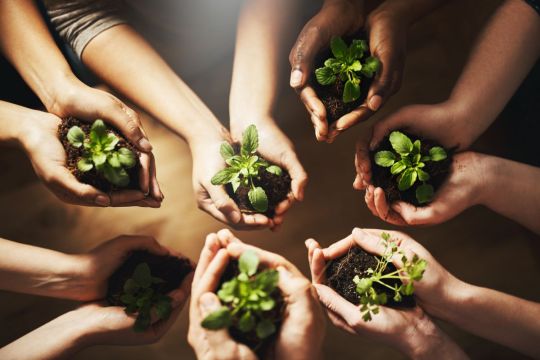
In today’s era of climate urgency, businesses, governments, and individuals are all seeking innovative solutions to minimize their environmental impact. Among the most significant drivers of this shift are green tech startups. These ventures are leading the charge in tech-enabled sustainability by introducing disruptive technologies and pioneering strategies to address some of the planet's most pressing challenges. For C-suite executives, startup entrepreneurs, and managers, understanding the role of these startups is crucial for staying aligned with sustainability goals and seizing emerging opportunities.
The Rising Importance of Green Tech Startups
Green tech startups are uniquely positioned to drive tech-enabled sustainability because of their agility and ability to think outside traditional frameworks. Unlike established corporations, startups can focus exclusively on sustainability-driven innovation without being constrained by legacy systems. By leveraging cutting-edge technologies such as artificial intelligence (AI), blockchain, and the Internet of Things (IoT), these startups are redefining how industries approach resource management, energy efficiency, and environmental preservation.
The surge in venture capital investment in green tech startups is further evidence of their importance. In 2023 alone, billions were funneled into companies tackling climate change, clean energy, and circular economy solutions. This influx of funding has enabled startups to experiment, scale rapidly, and deploy impactful solutions that would have been unthinkable a decade ago.
Key Areas Where Green Tech Startups Are Driving Change
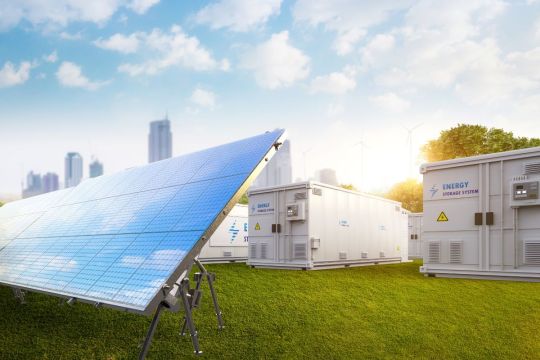
Green tech startups are making strides across various sectors, each contributing uniquely to tech-enabled sustainability. Below are some of the most transformative areas:
Renewable Energy and Storage Renewable energy startups are pushing the boundaries of solar, wind, and hydro technologies. By integrating AI and IoT, they optimize energy production and consumption in real-time. Companies like Form Energy are innovating in long-duration energy storage, addressing one of the critical bottlenecks in renewable energy adoption. Such advancements are crucial for reducing dependency on fossil fuels and enabling tech-enabled sustainability on a global scale.
Sustainable Agriculture Agriculture accounts for a significant portion of global greenhouse gas emissions. Startups like Indigo Agriculture and Plenty are using AI-powered precision farming and vertical farming to revolutionize food production. These technologies reduce water usage, minimize chemical inputs, and maximize yield, ensuring a sustainable food supply chain while promoting environmental health.
Waste Management and Circular Economy Green tech startups in the waste management space are addressing the growing problem of resource inefficiency. Companies like Rubicon and TerraCycle are leveraging technology to transform waste into valuable resources, reduce landfill dependency, and promote recycling. Such efforts are central to advancing a circular economy, a core component of tech-enabled sustainability.
Smart Cities and Infrastructure As urbanization accelerates, startups are creating smart city solutions to enhance energy efficiency, reduce traffic congestion, and optimize water usage. Technologies such as IoT-enabled sensors and smart grids are at the heart of these efforts, ensuring that cities are not only livable but also sustainable. Companies like Envision Digital are leading the way by building platforms that integrate renewable energy sources into urban planning.
Carbon Capture and Offset Technologies Startups like Climeworks are developing advanced carbon capture solutions that remove CO2 from the atmosphere. By integrating these technologies with blockchain, some companies are also creating transparent systems to trade carbon credits. These initiatives are critical in achieving net-zero goals and solidifying the role of tech-enabled sustainability.
The Impact of Green Tech Startups on Corporate Strategies
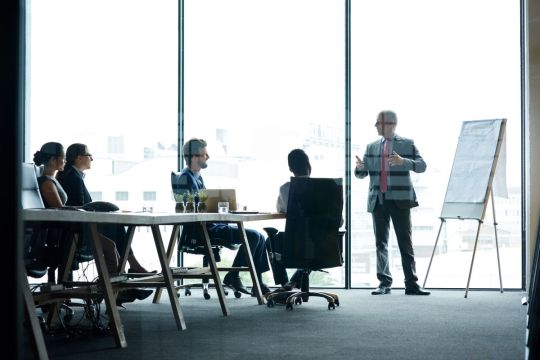
For established organizations, collaborating with or investing in green tech startups offers a pathway to integrate tech-enabled sustainability into their operations. Partnerships with startups enable larger companies to access innovative solutions without the lengthy R&D processes typical of traditional corporations. Additionally, adopting technologies developed by green tech startups can enhance a company’s ESG (Environmental, Social, and Governance) performance, which is increasingly scrutinized by investors and stakeholders.
For instance, multinational corporations like Microsoft and Amazon have set ambitious climate targets by integrating technologies from startups focused on renewable energy and carbon capture. These collaborations not only accelerate sustainability efforts but also serve as powerful examples of how tech-enabled sustainability can scale across industries.
Challenges and Opportunities for Green Tech Startups
While the potential of green tech startups is undeniable, they face several challenges, including:
Funding Gaps: Although investment in green tech is growing, early-stage startups often struggle to secure the necessary capital to bring their innovations to market.
Regulatory Hurdles: Navigating the complex regulatory environment surrounding environmental policies can delay product development and deployment.
Scalability: Many solutions require significant infrastructure investments, which can hinder rapid scalability.
However, these challenges also present opportunities. Governments worldwide are introducing policies and incentives to promote sustainability, creating a supportive environment for green tech startups. For example, the Inflation Reduction Act in the United States has unlocked billions in funding for clean energy initiatives, directly benefiting startups.
The Road Ahead: Collaboration for Greater Impact
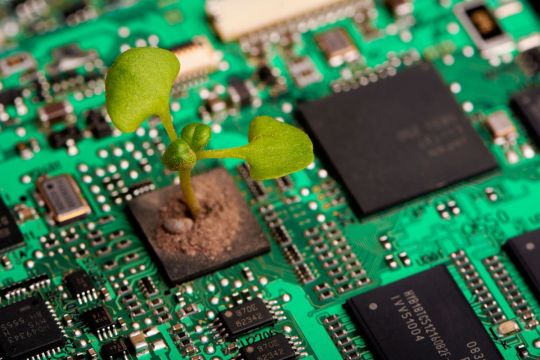
To maximize the impact of green tech startups on tech-enabled sustainability, collaboration will be key. Partnerships between startups, corporations, and governments can create a powerful ecosystem that accelerates innovation and deployment. For example, startups developing smart grid technologies can work alongside utility companies to modernize energy infrastructure, while government grants can help offset initial costs.
Moreover, as the global focus on sustainability intensifies, startups must continue to prioritize transparency and accountability. Leveraging technologies like blockchain to track carbon reductions or resource efficiency can build trust and demonstrate the tangible benefits of their innovations.
Conclusion
Green tech startups are at the forefront of driving tech-enabled sustainability, addressing critical challenges across energy, agriculture, waste management, and urban development. Their ability to innovate and adapt quickly positions them as key players in the fight against climate change and resource depletion. For business leaders, supporting and collaborating with these startups represents a strategic opportunity to align with sustainability goals while unlocking new avenues for growth.
Uncover the latest trends and insights with our articles on Visionary Vogues
0 notes
Text
Office Supplies Market Opportunity, Driving Factors And Highlights of The Market
The global office supplies market size is expected to reach USD 179.74 billion by 2030, according to a new report by Grand View Research, Inc., registering a CAGR of 2.1% from 2023 to 2030. Product consumption is growing owing to an increasing number of corporate offices as well as an increase in the number of hotels around the globe catering to the rapidly growing demands of the tourism industry. The COVID-19 pandemic had a negative impact on the market growth. The pandemic has increased the pace of digitalization of office spaces, adversely affecting the demand for traditional office supplies. However, the pandemic gave a boost to the trend of remote working, which caused drastic changes in the patterns of product consumption. An increasing phenomenon in the market is the adoption of sustainable and eco-friendly products by companies to reduce their carbon footprint.
In May 2021, BIC announced a partnership with TerraCycle, Inc. to launch a brand-new recycling program for their writing supplies equipment. This move was in line with the company’s push for eco-friendly products. Asia Pacific is anticipated to be the fastest-growing regional market with a CAGR of around 2.6% from 2023 to 2030. This is owing to high product consumption by the education sector in countries, such as China, India, and Bangladesh. Key companies in the global market undertake various business strategies, such as new product launches, M&As, and partnerships, to gain higher market shares. In November 2022, 3M's brand 'Scotch' launched a new product line, 'Packt', featuring envelopes, mailers, and boxes of different sizes and colors. The new product line also includes packaging tape and packing paper that come in creative designs to secure and seal the contents of packages.
Gather more insights about the market drivers, restrains and growth of the Office Supplies Market
Office Supplies Market Report Highlights
• The paper supplies segment accounted for the maximum share of 25.9% in 2022 due to a rise in the number of corporate offices as a result of the growing services sector worldwide. For instance, according to the Economic Survey 2022-23 by the Ministry of Finance, the service sector in India grew by 8.4% in the financial year 2022 compared to a contraction of 7.8% in the financial year 2021
• The online distribution channel segment will register the highest CAGR of 3.4% from 2023 to 2030. The increased internet penetration, along with greater accessibility to affordable smartphones & internet services, has accelerated the transition from traditional brick-and-mortar stores to online platforms
• The corporate end-use segment accounted for a dominant share of 33.3% in 2022 owing to the increased establishment of various offices and number of office products suppliers & and manufacturers worldwide
Office Supplies Market Segmentation
Grand View Research has segmented the global office supplies market based on product, distribution channel, end-use, and region:
Office Supplies Product Outlook (Revenue, USD Million, 2018 - 2030)
• Paper Supplies
o Notebooks & Notepads
o Printing Paper
o Others
• Writing Supplies
o Pens & Pencils
o Highlighters & Markers
o Others
• Filing Supplies
o File Folders
o Envelopes
o Others
• Desk Supplies
o Desk & Drawer Organizer
o Paperweights & Stamp Pads
o Others
• Binding Supplies
• Others
Office Supplies Distribution Channel Outlook (Revenue, USD Million, 2018 - 2030)
• Offline
• Online
Office Supplies End-use Outlook (Revenue, USD Million, 2018 - 2030)
• Corporates
• Educational Institutes
• Hospitals
• Hotels
• Others
Office Supplies Regional Outlook (Revenue, USD Million, 2018 - 2030)
• North America
o U.S.
o Canada
o Mexico
• Europe
o U.K.
o Germany
o France
o Spain
• Asia Pacific
o China
o India
o Japan
• Central & South America
o Brazil
o Argentina
• Middle East & Africa
o Saudi Arabia
o South Africa
Order a free sample PDF of the Office Supplies Market Intelligence Study, published by Grand View Research.
#Office Supplies Market#Office Supplies Market Size#Office Supplies Market Share#Office Supplies Market Analysis#Office Supplies Market Growth
0 notes
Text
More suppliers volunteer to help residents with Styrofoam recycling
Supplier TerraCycle recently announced that it has partnered with more than 20 suppliers in the United States to provide and collect "zero waste bags" that can manage 24 materials, including coffee capsules, expanded polystyrene, etc. TerraCycle founder Tom Szaky said that their goal is to work with composting companies across the country to help residents recycle more household products through door-to-door services, especially products that are not easily accepted by local recycling systems, including Styrofoam recycling. By investing in a foam compactor, companies can turn waste foam into treasure and make a profit. Foam compactors are recycling equipment specifically used for compressing foams, which use screw physical compression technology to compact and shape loose foam. Compacted foam blocks can be directly granulated for self-use, saving raw materials from the source and reducing production costs. Alternatively, companies can sell foam blocks compacted by Styrofoam compactors to downstream recyclers to earn stable profits. The market demand for compacted Styrofoam blocks is very broad, not only because of the drive of consumer environmental protection needs, but also because of international requirements for recycled materials.

0 notes